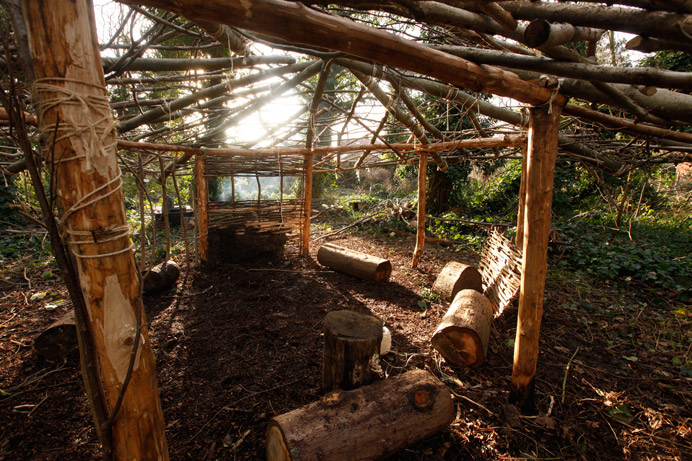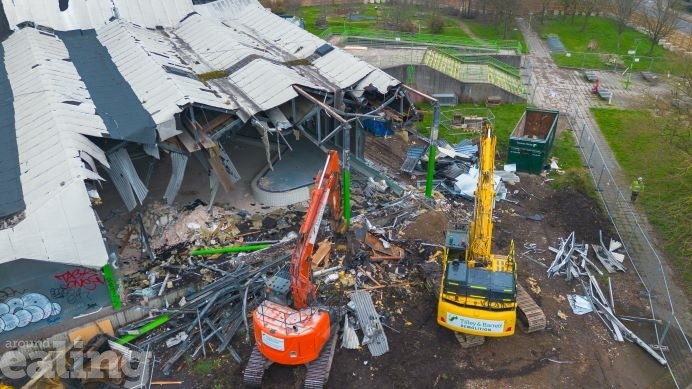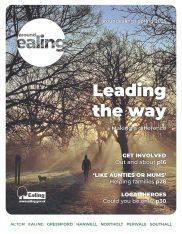A piece of living history has appeared under the trees in the beautiful, secluded Litten Nature Reserve in Greenford.
A council park ranger and volunteers from the Friends of the Litten have been busy building a Celtic round house for visitors to enjoy – using some traditional methods. You can see a video made by the volunteers above.
The idea was to provide an educational, but fun, space with an historical background and environmentally-friendly edge that community groups and students can enjoy and learn from. And it complements the reserve’s other social spaces and wildlife havens that Neelum Bains explored previously for Ealing News Extra.

Ealing Council park ranger Jon Staples explained: “It was vital to make the structure out of raw materials sourced locally to keep its authenticity and realistic to something that would have been built hundreds of years ago. Historically the timber walls of a roundhouse were usually made of wattle reeds, daubed with clay and insulated with grass or heather.”
So Jon found suitable wood from trees in Horsenden Hill and Perivale Wood to use on the hut. But Jon did not take the easy route and use modern electric power tools to harvest the wood or build the hut. His quest for authenticity meant he had to use hand saws and even drill holes in the wood using a traditional wooden drilling device.
“With the main structure now in place, with its rounded roof and curved walls, you can begin to imagine how people could have lived in a roundhouse,” continued Jon. “They would have used a fire in the middle of the room to light and heat the house, while all its inhabitants sat around the edges. It would definitely have been a cosy way to live.
“We are gradually adding to the structure. We have recently added soil to the roof which we excavated from a ditch we’ve created around the edges of the hut to receive any ‘run off’ rainwater from the hut. We have also planted some wild flower seeds and grass in the mud so that it will be become a ‘living roof’ in the summer and the roots from the plants will help bind it all together.

“We are still working on constructing the walls, bit by bit, and have been getting a lot of help from educational groups that come and visit. The walls are being built by weaving branches together to make frames. Soon we will add mud cement using limestone to it to help make it stronger. This used to be called wattling and daub back when roundhouses were built a lot.
“The hole in the centre of the roof will allow us to build a small fire inside the hut, like they would have in Celtic times, only a little but safer than they used to, by sinking a mental container into the ground to contain the fire.
“We have left space left for the windows to let us to use the roundhouse as a den to watch birds and wildlife from. We hope this is popular with the younger and more elderly visitors to the reserve.

“I am really excited to see how visitors interact with the environment and use the space now the hut has been built. I really hope it encourages them to get involved more with the natural environment where they live and explore all the lovely things that basic natural elements such as trees, grass and plants can give you.
“Although the hut is a little ambitious a build for most people to try at home, it just goes to show how you can use natural materials to build your child a small eco-den in the back garden and get them closer to nature.”
Find out what other hidden gems there are at the Litten Reserve.







